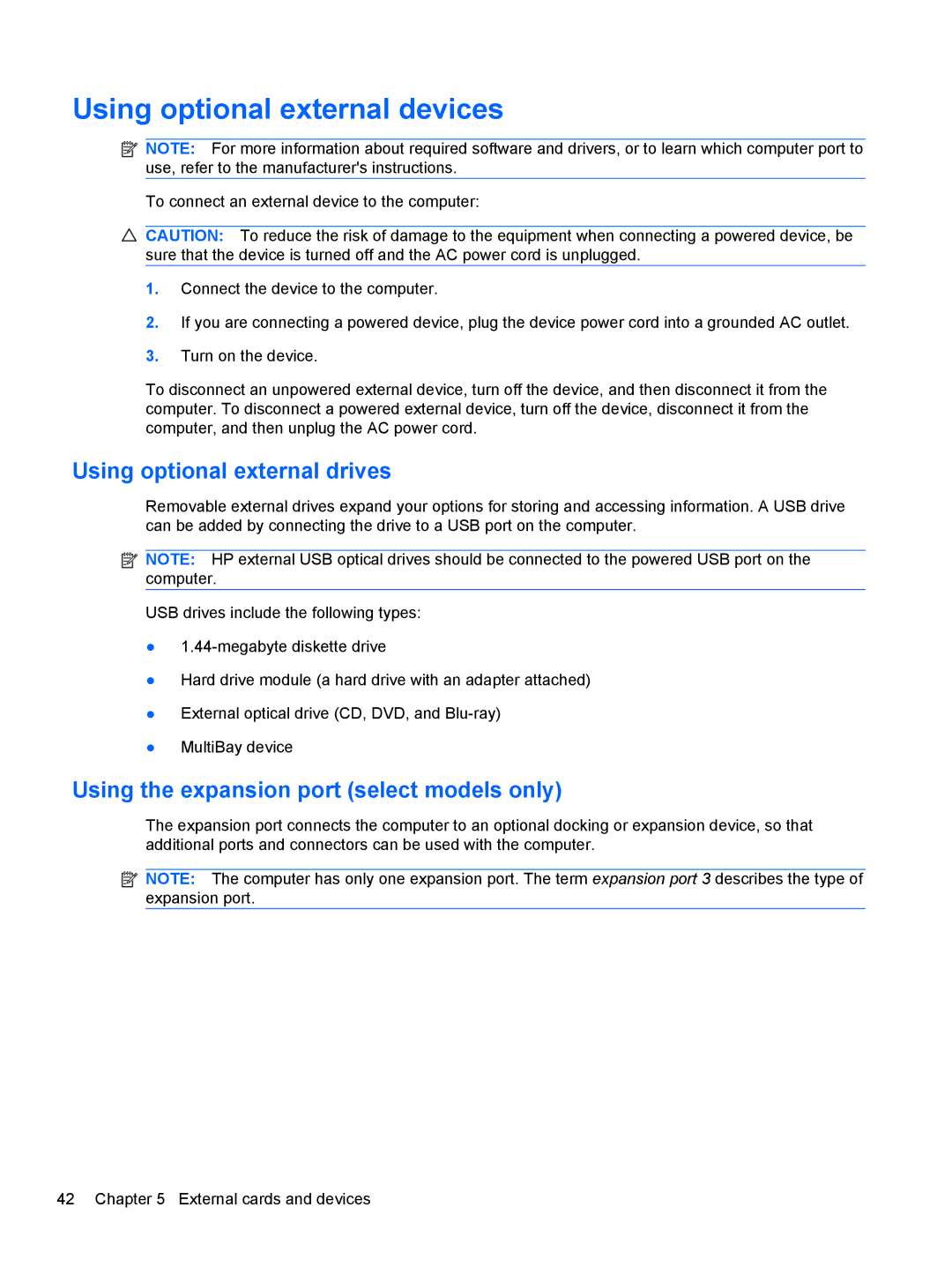
Using optional external devices
![]() NOTE: For more information about required software and drivers, or to learn which computer port to use, refer to the manufacturer's instructions.
NOTE: For more information about required software and drivers, or to learn which computer port to use, refer to the manufacturer's instructions.
To connect an external device to the computer:
![]() CAUTION: To reduce the risk of damage to the equipment when connecting a powered device, be sure that the device is turned off and the AC power cord is unplugged.
CAUTION: To reduce the risk of damage to the equipment when connecting a powered device, be sure that the device is turned off and the AC power cord is unplugged.
1.Connect the device to the computer.
2.If you are connecting a powered device, plug the device power cord into a grounded AC outlet.
3.Turn on the device.
To disconnect an unpowered external device, turn off the device, and then disconnect it from the computer. To disconnect a powered external device, turn off the device, disconnect it from the computer, and then unplug the AC power cord.
Using optional external drives
Removable external drives expand your options for storing and accessing information. A USB drive can be added by connecting the drive to a USB port on the computer.
![]() NOTE: HP external USB optical drives should be connected to the powered USB port on the computer.
NOTE: HP external USB optical drives should be connected to the powered USB port on the computer.
USB drives include the following types:
●
●Hard drive module (a hard drive with an adapter attached)
●External optical drive (CD, DVD, and
●MultiBay device
Using the expansion port (select models only)
The expansion port connects the computer to an optional docking or expansion device, so that additional ports and connectors can be used with the computer.
![]() NOTE: The computer has only one expansion port. The term expansion port 3 describes the type of expansion port.
NOTE: The computer has only one expansion port. The term expansion port 3 describes the type of expansion port.
42 Chapter 5 External cards and devices
